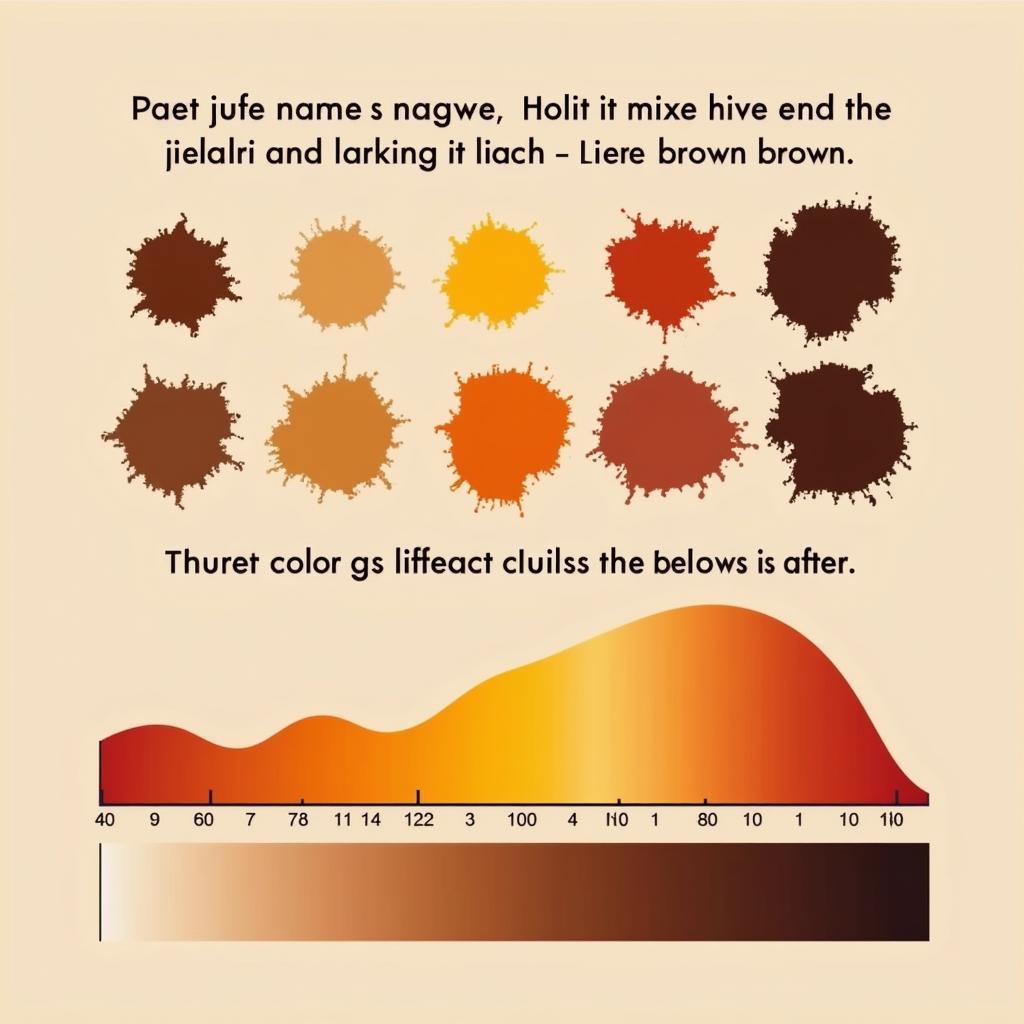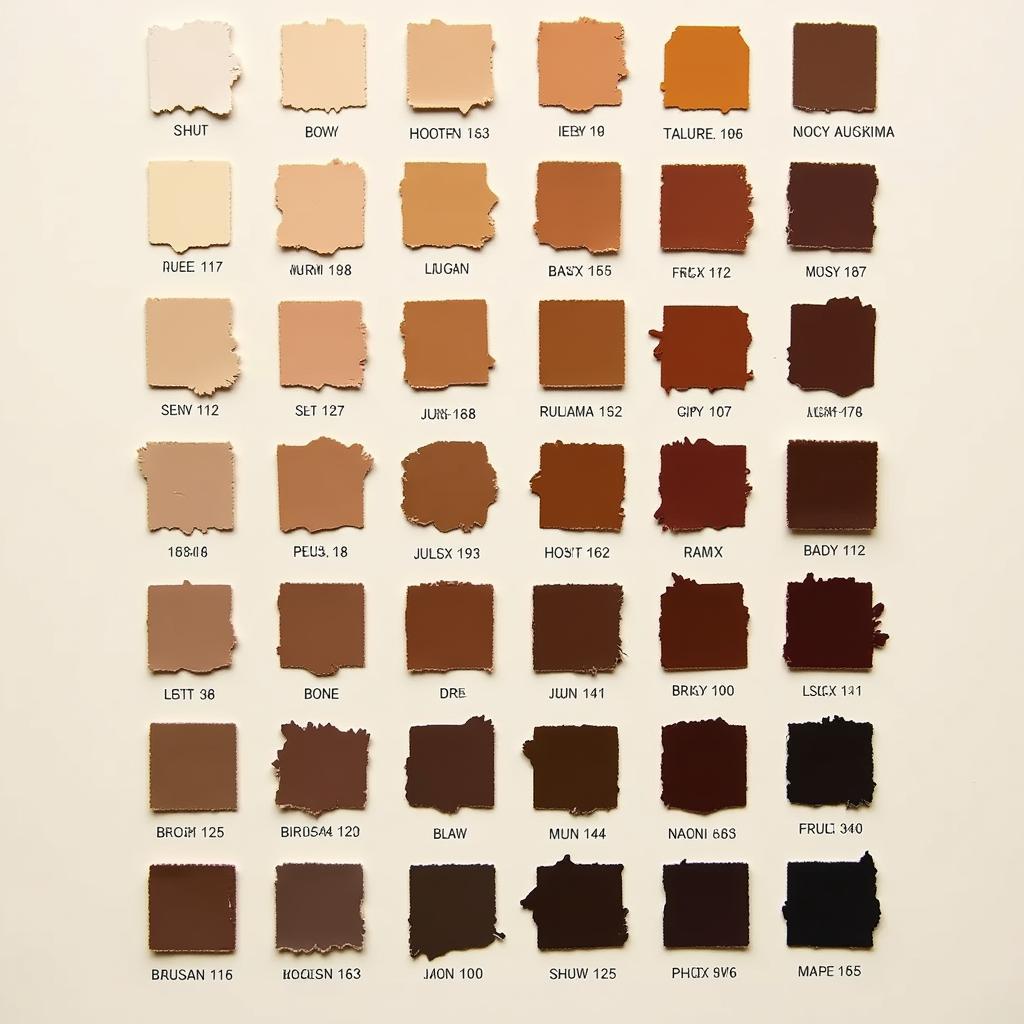Brown, the color of rich soil, sturdy tree bark, and comforting hot chocolate. But is brown truly a color in its own right? This seemingly simple question opens a fascinating exploration into the world of color theory, perception, and even a touch of physics.
Decoding Brown: Pigment vs. Light
Understanding brown requires differentiating between pigments and light. Pigments are physical substances that absorb and reflect light, creating color. Light, on the other hand, is electromagnetic radiation, and the colors we perceive are based on the wavelengths of this radiation. When it comes to pigments, brown is very much a color. It is created by mixing other colors, primarily red, yellow, and black. The precise proportions of these colors determine the specific shade of brown, from light tan to deep chocolate. However, in the spectrum of visible light, brown doesn’t exist as a distinct wavelength. What we perceive as brown when looking at light is actually a darker shade of orange or red.
 Brown Pigment vs. Light Spectrum
Brown Pigment vs. Light Spectrum
Why Do We See Brown Then? The Role of Perception
If brown isn’t on the light spectrum, why do we see it so readily? The answer lies in how our eyes and brains process color. When light reflects off a brown object, it absorbs certain wavelengths and reflects a combination of others. This reflected light, when it reaches our eyes, is interpreted by our brains as brown. It’s a complex interplay between physics and perception. Think of it like this: your eye doesn’t see “brown” directly; it sees a specific combination of reflected wavelengths that your brain then labels as “brown.”
The Many Faces of Brown: Exploring Shades and Undertones
Brown is incredibly diverse. From the warm, reddish hues of auburn to the cool, grayish tones of taupe, the world of brown offers a rich palette for designers and artists. The undertones in brown can significantly impact its appearance and how it interacts with other colors. A brown with red undertones might feel warm and inviting, while a brown with gray undertones can create a more sophisticated and subdued atmosphere. You can find brown appearing in numerous contexts, from fashion to interior design. Understanding the nuances of brown allows you to create harmonious and impactful color schemes.
 Shades and Undertones of Brown
Shades and Undertones of Brown
Is Brown a Primary, Secondary, or Tertiary Color?
Brown is not considered a primary, secondary, or tertiary color in the traditional color theory model. Primary colors (red, yellow, and blue) cannot be created by mixing other colors. Secondary colors (orange, green, and violet) are created by mixing two primary colors. Tertiary colors are made by mixing a primary color with a neighboring secondary color. Since brown is usually created by mixing multiple colors, including black, it falls outside of this basic framework.
Brown in Design: Creating Harmony and Balance
Brown offers a versatile backdrop in interior design. what colors go with black and brown provides a grounding element, offering a sense of stability and warmth. It pairs beautifully with various colors, creating diverse moods. For a natural and organic feel, combine brown with greens and creams. For a more dramatic look, consider pairing brown with deep blues or rich oranges. Brown can also be used to create a sense of sophistication and elegance, particularly when combined with metallic accents like gold or brass.
Brown in Fashion: Timeless and Versatile
Just like in interior design, brown plays a crucial role in fashion. what color to wear with light brown pants is a staple color for many wardrobe items, from classic leather jackets to cozy sweaters. Understanding how to combine brown with other colors can elevate your style. For a classic look, combine brown with cream or navy. For a more contemporary approach, try pairing brown with olive green or burgundy. Accessorizing with metallics can add a touch of glamour to any brown outfit. Consider what color goes with brown walls for additional inspiration.
Conclusion: Embracing the Richness of Brown
While brown might not be a pure spectral color, its presence in our world is undeniable. From the natural world to our homes and wardrobes, brown offers a sense of warmth, stability, and versatility. By understanding its complexities and exploring its many shades, we can fully appreciate the richness and depth this color brings. For those interested in the nuances of color, you may also want to learn what color is close to reddish brown. Understanding brown is key to unlocking its design potential.
FAQs
- What colors make brown? Brown is typically created by mixing red, yellow, and black.
- Is brown a warm or cool color? Brown can be both warm and cool depending on its undertones.
- What are some popular shades of brown? Popular shades include beige, tan, chocolate, taupe, and auburn.
- How can I use brown in my home decor? Brown works well as a base color for walls, furniture, and flooring.
- What colors go well with brown clothing? Brown pairs well with cream, navy, olive green, and burgundy. Can you color brown eggs for easter? Yes, you can.
For assistance, contact us at 0373298888, email [email protected], or visit 86 Cau Giay, Hanoi. We have 24/7 customer support.
